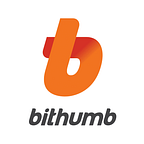Is GBTC selling spree going to be a reality?
There is increasing fear that investors will engage in a mass sell-off of Grayscale Bitcoin Trust (GBTC), an asset which grew to become the world’s biggest indirect Bitcoin investment product (fund) thanks to investments by institutional investors and wealthy individuals.
It was JP Morgan Chase, a representative investment bank (IB) on Wall street, that has given rise to such fear. Recently, JP Morgan released its Bitcoin investment report and warned that GBTC investors whose net assets amount to 21.9 billion dollars (about 24.8 trillion won) will start a selling spree in July.
GBTC is a fund set up in 2013 through investments by institutional investors and qualified individual investors who meet the asset amount requirement. Since this fund is listed in the stock market, investors need to buy the fund from the market to indirectly invest in Bitcoin. In turn, the fund invests 100% of the purchase money in Bitcoin to make profit. The fund’s stock price is adjusted depending on the level of profit.
What is important is that GBTC investors cannot dispose of the stocks during the lockup period, the first six months after the purchase. Even if the Bitcoin price drops after purchase along with the GBTC profit rate and stock price, the investor can sell its purchased stocks only after the initial six-month period.
JP Morgan highlighted the possible mass sell-off of GBTC stocks in June and July when the lockup expires, considering the high number of new investors into this trust during the strong rally from the end of last year to early this year. Once this happens, the trust has no other choice than to sell off its Bitcoins to give back the money.
According to this report, the net inflow of money into the Bitcoin trust in last December and January was 2 billion dollars (about 2.265 trillion won) and 1.7 billion dollars (1.925 trillion won), respectively. These figures are the highest among the monthly net inflow amounts. The net inflow of these two months alone amount to more than 4 trillion won. This means that the maximum possible selling amount by these investors is 4 trillion won during the June and July when the six-month lockup of GBTC stocks are released.
It is true that GBTC has significantly contributed to the rise of Bitcoin price by attracting many institutional investors and wealthy individuals while the Bitcoin exchange-traded fund (ETF) was struggling to be approved in the US. With that said, outflow of money from this trust will inevitably deal a big blow to the Bitcoin market. This certainly is a reasonable concern, but what is important is whether the investors will actually go ahead and sell their trust stocks.
To determine this, it is necessary to compare the trust stock price and the Bitcoin price. As mentioned above, investors purchase trust stocks, not Bitcoins, and get rewarded for their investments according to the stock price that changes depending on the fund’s profit rate. If more investors are willing to buy GBTC, the fund will experience a rise in stock price and trade at a premium higher than the Bitcoin price. On the contrary, if investors are withdrawing from the fund, the stock price will fall, and the fund will trade at a discount lower than the Bitcoin price.
Then, what are the current circumstances? From end May to early June this year when the Bitcoin price was in danger of falling to the 30,000-dollar level for the first time, the discount of GBTC reached almost 20%. This happened because investors withdrew in a rush, making the fund less popular than Bitcoin. However, the discount went down and stands at less than 10% currently. This means that while worrying investors are selling their stocks, some new investors are making purchase as well. Investors seem to be regaining a sense of stability.
Another important thing to see is the trust’s profit rate. This fund is experiencing a great loss, with the profit rates during the past one month and three months being -13% and -36%, respectively. However, if we consider the entire period from the start of year to the present, the profit rate stands at +15%. The annual profit rate is whopping 255%, and the accumulated profit rate from the fund’s initial year 2013 to the present is 22,300%. In other words, while the Bitcoin price experienced short-term falls, long-term investors are still making vast amounts of profits. Even those who made their first investment early this year are making a profit of around 15%. Thus, GBTC unlocking may not be an as strong a reason to sell the stocks as one might think.
Grayscale does not quite agree with JP Morgan’s such a concerned view for the same reason. The CEO of Grayscale, Michael Sonnenshein said, “Generally speaking, our investors are looking at this for a medium- to longer-term time horizon,” adding that the investors might not want to sell the assets at a discount in a declining market. Since March when the fund price abruptly dropped, Grayscale has been declining new investments. This could mean that it may be hard to see any new GBTC for sale after the June-July crisis ends.
The “era of indirect Bitcoin investment” only started in the second half of last year and has been in full swing for less than a year. This is the first time that this method of investment has been put to the test. It is important to carefully observe the investors’ behaviors and respond rather than be gripped with panic.
